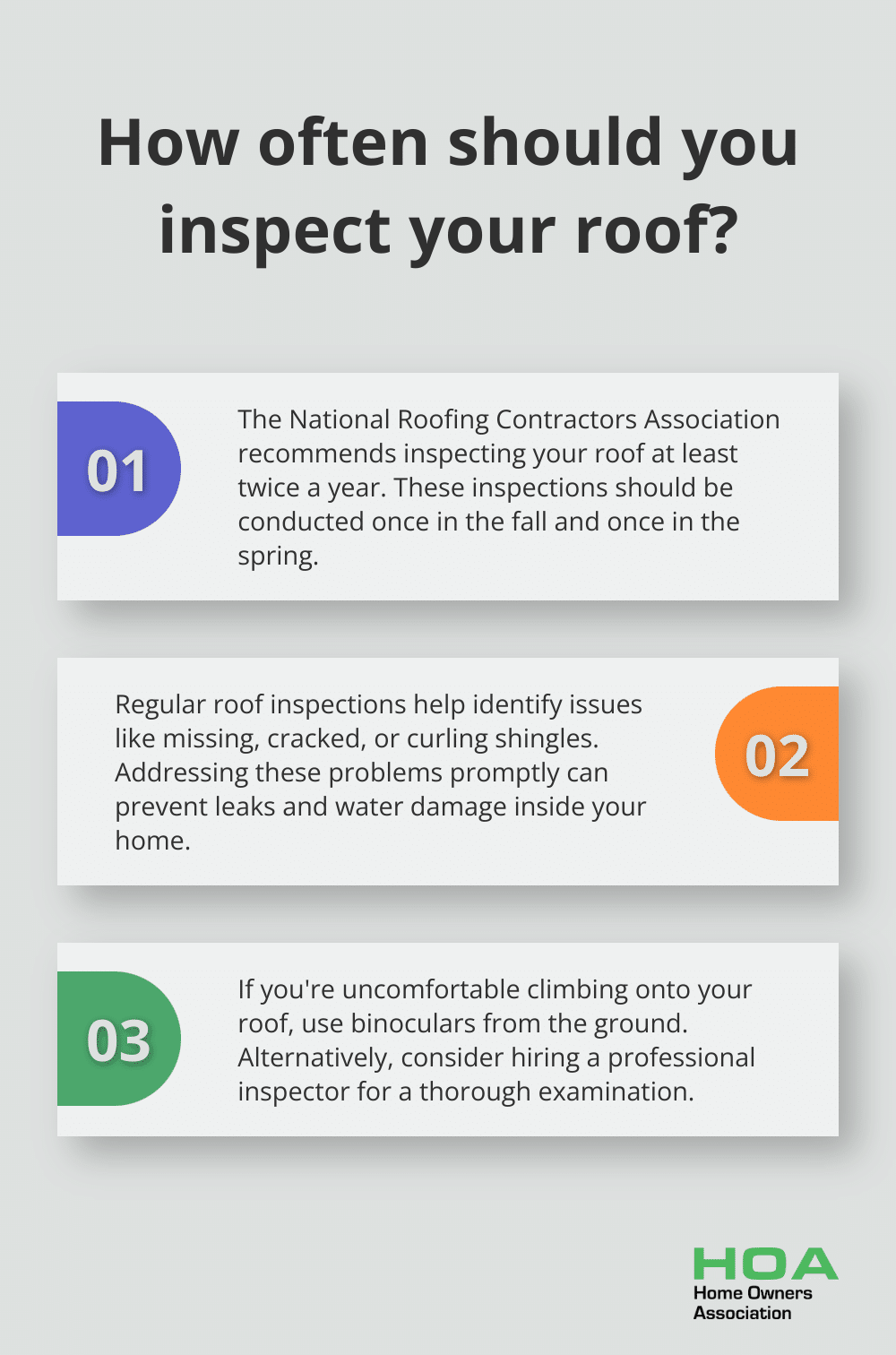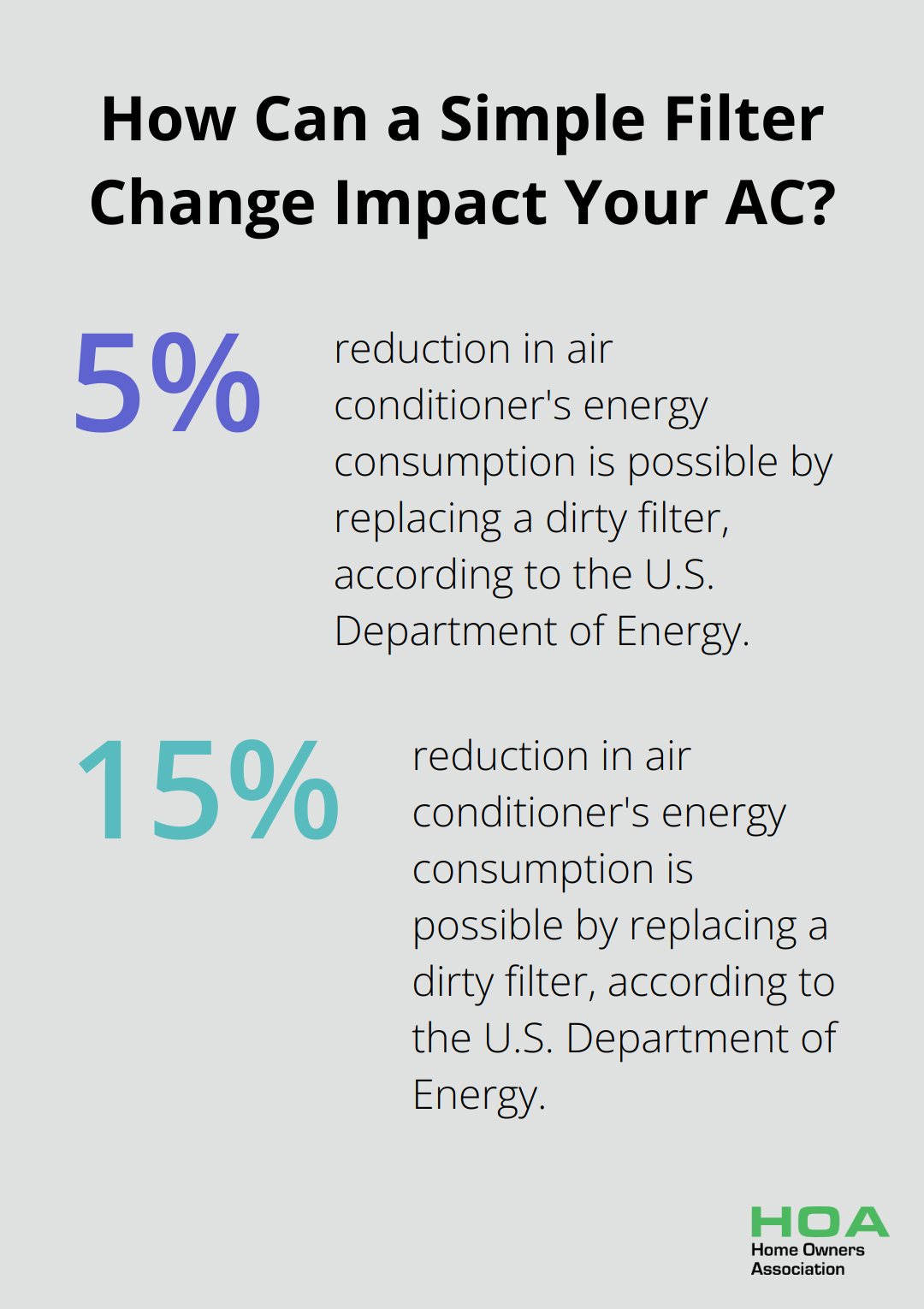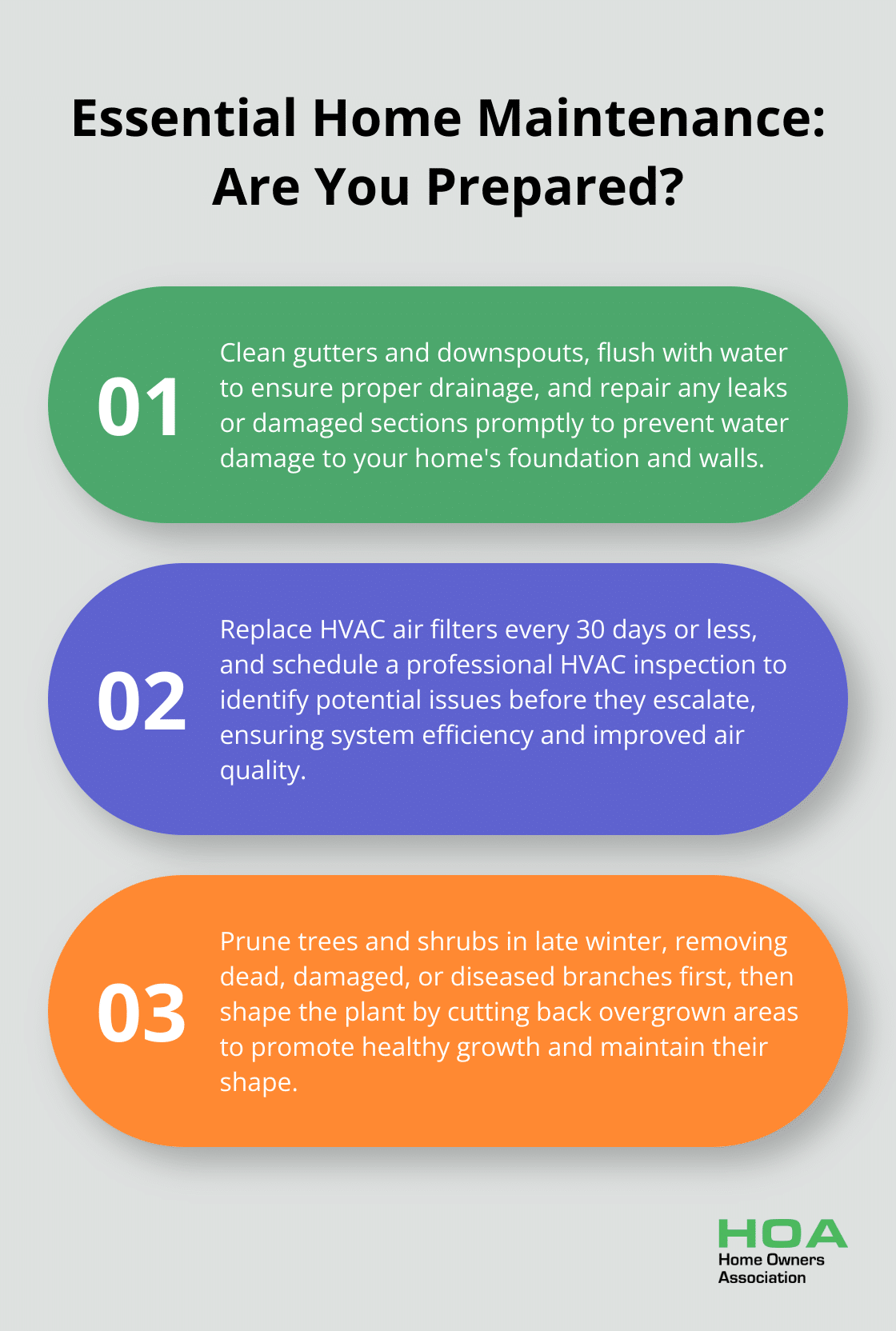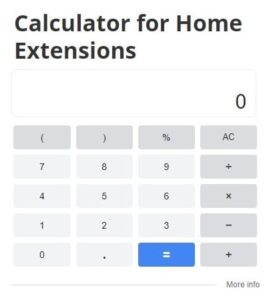
Spring is here, and it’s time to give your home some much-needed attention. At Home Owners Association, we know how important it is to keep your property in top shape.
Our spring time home maintenance checklist will guide you through essential tasks to protect your investment and ensure a comfortable living environment. From exterior repairs to indoor upkeep and outdoor space preparation, we’ve got you covered.
How to Protect Your Home’s Exterior
Spring calls for a thorough check-up of your home’s exterior. Home Owners Association recommends you start with a comprehensive inspection of your property’s outer shell to identify and fix any issues that may have developed during the winter months.
Gutter and Downspout Maintenance
Start by clearing your gutters and downspouts of debris. Clogged gutters can cause water damage, which affects your home’s foundation and walls. Use a sturdy ladder and wear gloves to remove leaves, twigs, and other buildup. After clearing, flush the gutters with water to ensure proper drainage. Repair or replace any leaks or damaged sections promptly.
Roof Inspection and Repair
Examine your roof for signs of wear or damage. Look for missing, cracked, or curling shingles, which can lead to leaks and water damage inside your home. If you’re not comfortable climbing onto your roof, use binoculars from the ground or hire a professional inspector. The National Roofing Contractors Association suggests inspecting your roof at least twice a year-once in the fall and once in the spring.
Siding Care and Maintenance
Your home’s siding serves as its first line of defense against the elements. Inspect it for any cracks, holes, or loose panels. Clean the siding using a pressure washer or a long-handled brush with a mild detergent solution. Pay special attention to areas near the ground where dirt and grime tend to accumulate. Repair any damage promptly to prevent moisture infiltration and potential structural issues.
Foundation Check
Examine your home’s foundation for any signs of cracking or settling. Small hairline cracks are common and often not a cause for concern, but larger cracks or signs of shifting require evaluation by a professional. Look for any areas where water pools near the foundation and address drainage issues to prevent water damage.

These exterior maintenance tasks will not only improve your home’s curb appeal but also protect it from potential damage. Prevention is key when it comes to home maintenance, and addressing small issues now can save you from costly repairs in the future. As you complete these exterior tasks, you’ll be ready to move on to the interior maintenance checklist, which we’ll cover in the next section.
How to Maintain Your Home’s Interior
Spring presents the perfect opportunity to conduct a thorough check-up of your home’s interior. Let’s explore essential maintenance tasks to keep your home safe, comfortable, and efficient.
HVAC System Maintenance
Your heating, ventilation, and air conditioning (HVAC) system requires regular attention. Replace air filters every 30 days or less, depending on usage and filter type. Clean filters improve air quality and boost system efficiency. The U.S. Department of Energy reports that replacing a dirty filter can reduce your air conditioner’s energy consumption by 5% to 15%.

Schedule a professional HVAC inspection to identify potential issues before they escalate. A technician will ensure your system is ready for the warmer months ahead.
Safety Device Check-Up
Test your smoke and carbon monoxide detectors monthly and replace batteries at least once a year. The National Fire Protection Association advises replacing detectors entirely if they’re more than 10 years old.
Review your family’s emergency plan and check that fire extinguishers are easily accessible and not expired. This simple step can make a significant difference in an emergency situation.
Plumbing Inspection
Check for leaks and assess your home’s water pressure. Inspect visible pipes for signs of corrosion or leaking, focusing on areas under sinks and around toilets. To detect hidden leaks, read your water meter, avoid using water for two hours, then read it again. A change in the meter reading may indicate a leak.
Low water pressure could signal a problem with your plumbing system. Install a water pressure gauge to monitor this more accurately. Normal residential water pressure typically ranges between 40 and 80 psi (pounds per square inch).
Dryer Vent Maintenance
Clean your dryer vent to prevent fire hazards. Home clothes dryer fires caused annual averages of 13 civilian deaths, 444 civilian injuries, and $238 million in direct property damage, with failure to clean being the leading cause. Remove lint from the dryer’s lint trap after each use and clean the vent pipe annually.
To clean the vent, disconnect the dryer from the power source, detach the vent pipe, and use a vacuum or brush to remove lint buildup. This not only reduces fire risk but also improves your dryer’s efficiency (potentially lowering energy bills).
Window and Door Inspection
Examine windows and doors for drafts or damage. Replace worn weatherstripping and caulk any gaps to improve energy efficiency. Clean window tracks and lubricate door hinges to ensure smooth operation.
As you complete these interior maintenance tasks, you’ll create a safer and more comfortable living environment. Next, we’ll explore how to prepare your outdoor spaces for the warmer months, ensuring your entire property is ready for spring.
How to Prepare Your Yard for Spring
Spring calls for a revival of your outdoor spaces. A well-maintained yard enhances both aesthetics and property value. Let’s explore practical steps to prepare your outdoor areas for the warmer months ahead.
Prune Trees and Shrubs
Start with pruning your trees and shrubs. This task promotes healthy growth and maintains the shape of your plants. The University of Minnesota Extension suggests late winter as a good time for pruning most plants, as they and their pests are dormant this time of year, reducing the risk associated with pruning cuts.

Remove any dead, damaged, or diseased branches first. Then, shape the plant by cutting back overgrown areas. For flowering shrubs, consider their blooming cycle. Prune spring-flowering shrubs immediately after they finish blooming, while summer-flowering shrubs can be pruned in early spring.
Revitalize Outdoor Furniture
Your patio set likely needs attention after months of winter weather. Clean each piece thoroughly. Use a mixture of warm water and mild dish soap for metal furniture. Wooden furniture may require a specialized cleaner to remove dirt and mildew without damaging the finish.
Inspect your furniture for damage. Tighten loose screws, sand rough spots on wooden pieces, and touch up paint where needed. Replace worn cushions to instantly refresh your outdoor living space.
Upgrade Outdoor Lighting
Proper outdoor lighting enhances both safety and ambiance. Inspect all existing fixtures and replace any burnt-out bulbs. Clean light covers to maximize brightness. Consider upgrading to energy-efficient LED bulbs, which can last 3 to 5 times longer than CFLs and 30 times longer than traditional incandescent bulbs, according to the U.S. Department of Energy.
If your current lighting setup feels inadequate, add new fixtures. Solar-powered path lights offer an eco-friendly option for illuminating walkways. For entertaining areas, string lights create a warm, inviting atmosphere.
Prepare Garden Beds
Focus on preparing your garden beds for new plantings. Remove any debris, such as dead leaves or fallen branches. Loosen the soil to a depth of about 12 inches, incorporating organic matter like compost to improve soil structure and fertility.
Test your soil pH and nutrient levels using a home testing kit or by sending a sample to a local extension office. This information will guide your fertilization strategy for the coming growing season.
Apply a 2-3 inch layer of mulch around your plants (as recommended by the Mulch and Soil Council). This helps retain moisture, suppress weeds, and regulate soil temperature.
These steps will create an inviting outdoor space ready for spring enjoyment. Regular maintenance throughout the season will keep your yard looking its best.
Final Thoughts
Our spring time home maintenance checklist covers essential tasks to protect your property’s value and ensure its longevity. These tasks prevent small issues from becoming costly repairs, improve energy efficiency, and enhance curb appeal. Regular upkeep creates a safer, more comfortable living environment for you and your family while keeping your home systems running smoothly.

We at Home Owners Association support Melbourne homeowners with their maintenance needs. Our members receive exclusive trade pricing and discounts on construction, renovation, and maintenance materials (making home upkeep more affordable). We also provide expert advice and personalized guidance to help you maintain high-quality standards in your home projects.
A well-maintained home offers peace of mind and long-term savings. Our spring maintenance checklist helps you prepare for a worry-free season and a well-kept home year-round. Take action now to save time, money, and stress in the future.





